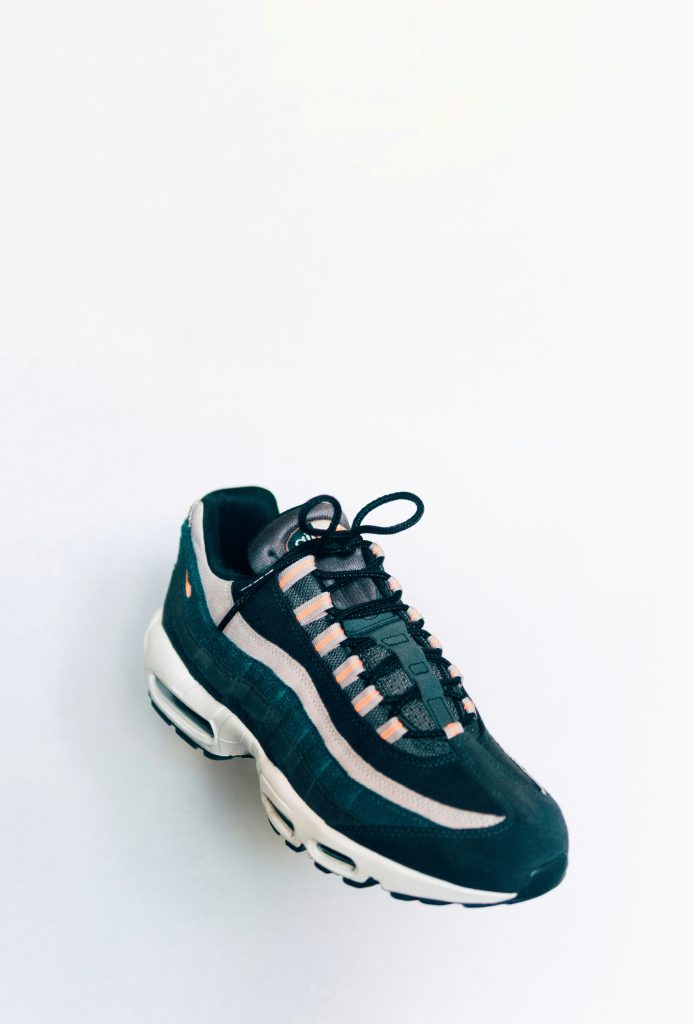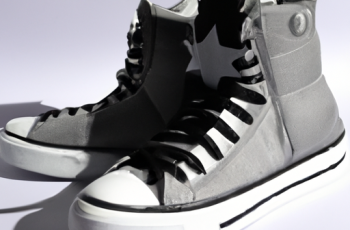Have you ever wondered how women’s footwear has evolved over time? Well, one remarkable advancement that has taken the shoe industry by storm is the evolution of knit technology. This innovative technique has revolutionized the way women’s shoes are designed, providing a perfect blend of comfort, style, and functionality. With its seamless construction and stretchy, breathable material, knitted footwear offers an unparalleled fit and feel. Whether you’re a fashion enthusiast or simply on the lookout for the most comfortable pair of shoes, the evolution of knit technology in women’s footwear is a trend worth exploring.
Introduction to Knit Technology in Women’s Footwear
Knit technology has revolutionized the world of women’s footwear, offering a perfect blend of comfort, style, and performance. In recent years, there have been significant advancements in knit technology, leading to the creation of innovative footwear designs that cater to the specific needs and preferences of women. From seamless knitted uppers to lightweight and flexible sneakers, knit technology has transformed the way we perceive and experience footwear. In this article, we will explore the various aspects of knit technology in women’s footwear and delve into its many benefits, advancements, and challenges.
Early Innovations in Knit Technology
Introduction of knitted uppers in women’s footwear
The introduction of knitted uppers in women’s footwear marked a significant shift in the industry. Traditional shoe uppers were typically made from leather or synthetic materials, which could be restrictive and uncomfortable for some individuals. Knitted uppers, on the other hand, offered a stretchy and breathable alternative that conformed to the shape of the foot, providing a sock-like fit. This innovation brought a new level of comfort and flexibility to women’s footwear, setting the stage for further advancements in knit technology.
Benefits and drawbacks of early knit technology
Early knit technology presented both benefits and drawbacks. One of the most notable advantages was the improved breathability of knitted uppers. The porous nature of the knit allowed air to circulate more freely, reducing the build-up of heat and moisture inside the shoe. This helped to keep the feet cool and dry, preventing discomfort and the growth of bacteria. Additionally, the stretchiness of the knit provided a snug fit while allowing for natural movement, enhancing overall comfort.
However, early knit technology also had its drawbacks. One common concern was the durability of the knit uppers. The open structure of the knit made it susceptible to snagging and tearing, especially in high-friction areas. This raised questions about the long-term durability and longevity of knit footwear. Another challenge was the limited availability of different knit patterns and designs. While early knitted uppers offered comfort, they lacked the style and variety that women desired in their footwear.

Advancements in Knit Technology
Seamless knitted uppers: a game-changer
One of the most significant advancements in knit technology was the development of seamless knitted uppers. This innovation addressed the durability concerns of early knit footwear by eliminating the need for seams. Seamless knitted uppers were created using advanced knitting techniques that allowed the shoe to be constructed in one piece, minimizing the risk of snags and tears. This not only improved the overall durability of the footwear but also enhanced the aesthetic appeal.
Integration of different knit patterns for enhanced performance
With advancements in technology, manufacturers began exploring the integration of different knit patterns in women’s footwear to enhance performance. By strategically placing more supportive or stretchy areas within the knit, designers were able to cater to specific needs, such as providing extra support in the arch or allowing for greater flexibility in the forefoot. This customization of knit patterns allowed for a more tailored fit and improved performance across a range of activities.
Improvements in breathability and moisture management through knit technology
Another area of advancement in knit technology was the continuous improvement in breathability and moisture management. Manufacturers started using specialized yarns and knitting techniques that further enhanced the airflow and moisture-wicking properties of the knit uppers. By incorporating mesh-like structures or moisture-wicking fibers, the knit technology allowed for improved ventilation and quick drying, keeping the feet cool and comfortable during intense workouts or hot weather conditions.
Knitted Sneakers: A Revolution in Footwear Design
Introduction of knitted sneakers
The introduction of knitted sneakers completely revolutionized the world of footwear design. It brought together the best of both worlds – the comfort of a knitted upper and the performance of a sneaker. Knitted sneakers quickly gained popularity among women due to their lightweight construction, breathable materials, and stylish aesthetics.
Lightweight and flexible knitted sneakers for women
One of the key features that set knitted sneakers apart was their lightweight and flexible nature. The knit uppers were significantly lighter than traditional materials, reducing the overall weight of the shoe without compromising on support or durability. The flexibility of the knit allowed for natural foot movements, enhancing the wearer’s comfort and freedom of motion. Women could now enjoy long walks, workouts, or daily activities without feeling weighed down by their footwear.
Customizable knitted sneakers for a personalized fit
Knit technology also enabled the production of customizable sneakers that catered to individual needs and preferences. Manufacturers started incorporating stretchable yarns that could mold to the unique contours of each foot, providing a personalized fit. This customization allowed women to find the perfect balance between support and comfort, reducing the risk of blisters, soreness, or other foot-related issues. Additionally, customizable knit sneakers allowed for easy adjustments, accommodating changes in foot size or shape over time.

Knit Technology in Athletic Performance Footwear
Enhancing athletic performance with knit technology
Athletes and fitness enthusiasts have also benefited greatly from the integration of knit technology in performance footwear. The lightweight and flexible nature of knit uppers have proven to be advantageous in enhancing athletic performance. The reduced weight of knit sneakers allows athletes to conserve energy and move more efficiently, resulting in improved speed and agility. The flexibility of the knit material also allows for natural foot movements, enabling athletes to achieve their maximum potential without feeling restricted by their footwear.
Impact of knit uppers on running shoes for women
Running shoes, in particular, have seen a significant transformation with the integration of knit uppers. Traditional running shoes often featured thick, bulky materials that offered support but lacked breathability. The introduction of knit uppers revolutionized the running shoe industry by providing women with lightweight and breathable options that kept their feet cool and dry during intense workouts. The stretchy nature of the knit also allowed for a snug fit, reducing the risk of blisters or discomfort experienced during long runs.
Improved support and stability with knit technology
Contrary to popular belief, knit technology doesn’t compromise on support and stability in athletic footwear. In fact, designers have developed intricate knit patterns that offer targeted support in key areas. These patterns can be strategically placed to provide extra stability in the heel, arch, or forefoot, enhancing the overall performance and reducing the risk of injuries. The flexibility of the knit also contributes to a more natural foot movement, promoting a more efficient running or jumping motion.
Sustainable Footwear Innovations through Knit Technology
Use of recycled yarns in knit footwear
As sustainability becomes increasingly important, knit technology has opened up new avenues for eco-friendly footwear innovations. Many manufacturers are now using recycled yarns in the production of knit footwear, reducing the demand for virgin materials and decreasing the carbon footprint. Knitting allows for precise material utilization, minimizing waste and maximizing resource efficiency. By incorporating recycled yarns, women can now enjoy stylish and comfortable footwear while contributing to a more sustainable future.
Reduced waste and environmental impact through knit manufacturing processes
In addition to using recycled yarns, knit technology also offers reduced waste and environmental impact through its manufacturing processes. Traditional shoe manufacturing often involves cutting and stitching different components together, resulting in significant waste materials. Knitted footwear, on the other hand, can be produced with minimal waste as it is created in one continuous piece. This makes knit technology a more sustainable approach, as it minimizes production waste and reduces the energy consumption associated with traditional manufacturing processes.

Fashion Forward: Knit Technology in High-End Women’s Footwear
Knit technology in luxury women’s footwear brands
Knit technology has also made its way into luxury women’s footwear brands, offering a fusion of style, comfort, and performance. High-end designers have embraced knit technology, creating innovative and fashion-forward footwear that meets the demands of discerning customers. The combination of intricate knit patterns, luxurious materials, and expert craftsmanship has elevated knit footwear to a new level, making it a coveted choice for women seeking both functionality and style.
Creative knit designs and patterns for fashionable footwear
One of the key attractions of knit technology in high-end women’s footwear is the endless possibilities it offers in terms of creative designs and patterns. Designers can experiment with different knit techniques to create intricate patterns, textures, and embellishments, resulting in unique and visually appealing footwear. From bold and vibrant prints to delicate lace-like textures, knit technology allows for the realization of artistic visions, pushing the boundaries of footwear design.
Challenges and Limitations of Knit Technology in Women’s Footwear
Durability concerns with knit uppers
While advancements have been made to address durability concerns, knit uppers still face challenges in terms of long-term durability. The open structure of the knit material makes it susceptible to snagging and tearing, especially in harsh conditions or high-friction areas. Manufacturers continue to explore ways to strengthen the knit without compromising its breathability and flexibility, aiming to create more durable footwear that can withstand the rigors of daily wear and tear.
Sizing and fit challenges
One common challenge with knit footwear is the potential sizing and fit issues. Knit uppers are often stretchy and conform to the shape of the foot, which can sometimes result in a looser fit compared to traditional materials. This can lead to fit inconsistencies among different individuals, making it crucial for manufacturers to provide accurate and detailed sizing information. Additionally, as each foot is unique, some women may find it more challenging to achieve the perfect fit with knit footwear, requiring further customization options or adjustments.
Complex manufacturing processes of knit footwear
The manufacturing process of knit footwear can be more complex compared to traditional shoe manufacturing. Knitting machines and specialized equipment are required to create the intricate knit patterns, adding an extra layer of complexity to the production process. This complexity can result in longer lead times and higher production costs, which may limit the accessibility of knit footwear to a wider audience. However, as technology continues to advance, manufacturers are working towards streamlining the manufacturing processes of knit footwear, making it more efficient and cost-effective in the long run.
Emerging Trends in Knit Technology
Integration of smart textiles with knit technology
An exciting emerging trend in knit technology is the integration of smart textiles. The combination of knit technology with smart textiles allows for the creation of footwear that can monitor and adapt to the wearer’s needs. For example, sensors embedded within the knit material can measure factors like temperature, pressure, or even gait analysis to provide real-time feedback and personalized support. This integration of technology and knit technology opens a whole new realm of possibilities for women’s footwear, promising enhanced performance and comfort.
3D printing in knit footwear
Another innovation in knit technology is the exploration of 3D printing techniques in the production of knit footwear. In traditional knit production, each shoe is produced in one continuous piece. However, 3D printing allows for the creation of complex structures and designs that can be seamlessly integrated into the knit material. This fusion of 3D printing and knit technology creates opportunities for more intricate and customized footwear designs, further pushing the boundaries of what is possible in women’s footwear.
Exploration of new materials for advanced knit technology
As knit technology continues to evolve, there is a growing interest in exploring new materials for enhanced performance and functionality. Manufacturers are experimenting with advanced yarns and fibers that offer improved durability, breathability, and moisture management. These new materials can further enhance the performance and comfort of knit footwear, catering to the specific needs of active women. Additionally, the exploration of new materials opens up the possibility of creating footwear that is even more sustainable, utilizing innovative and eco-friendly alternatives.
Conclusion
Knit technology has revolutionized women’s footwear, offering a perfect combination of comfort, style, and performance. From the early innovations of knitted uppers to the introduction of seamless knitted sneakers, knit technology has transformed the industry, providing women with a diverse range of options that meet their specific needs. With advancements in breathability, customization, and sustainability, knit technology continues to evolve, setting the stage for further innovations in the future. As we look ahead, we can anticipate the integration of smart textiles, 3D printing, and new materials to push the boundaries of what is possible in women’s footwear, shaping the industry and delivering an exceptional footwear experience for all.


